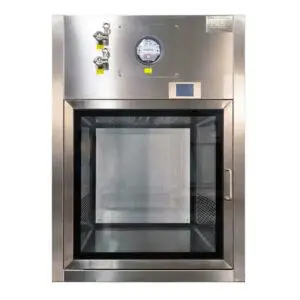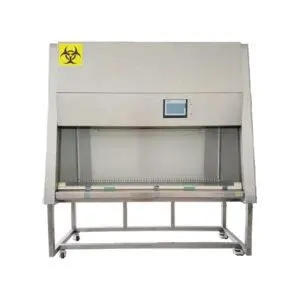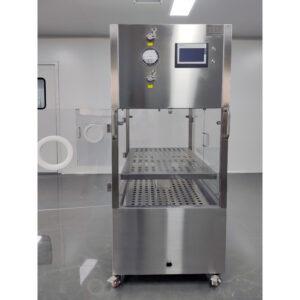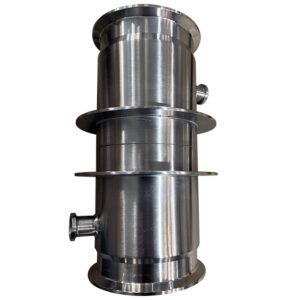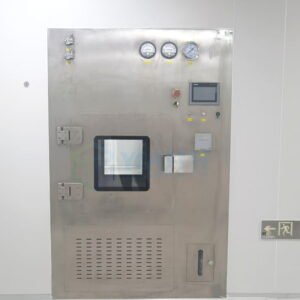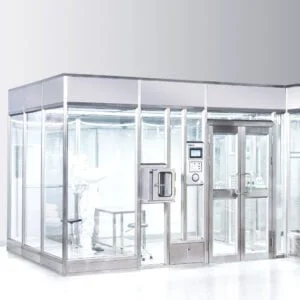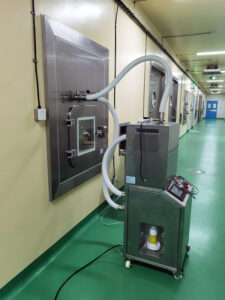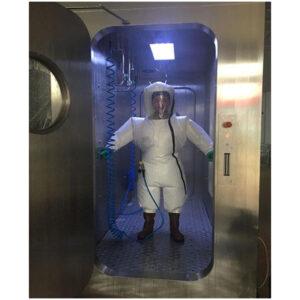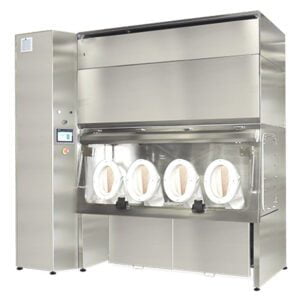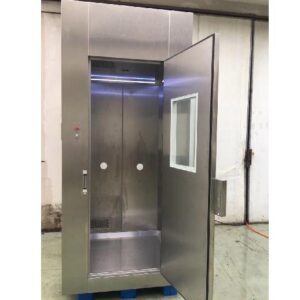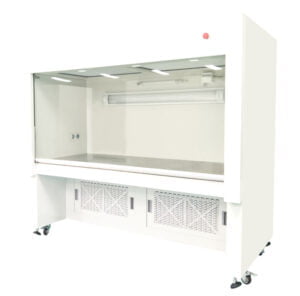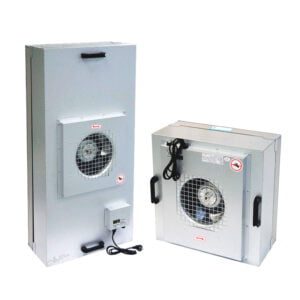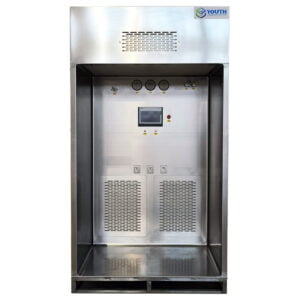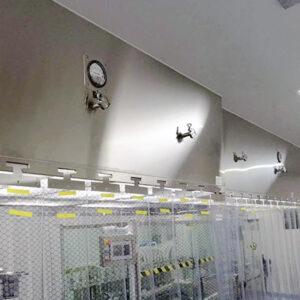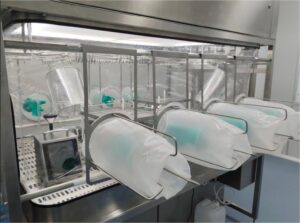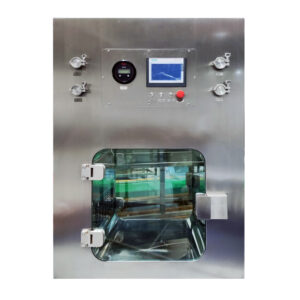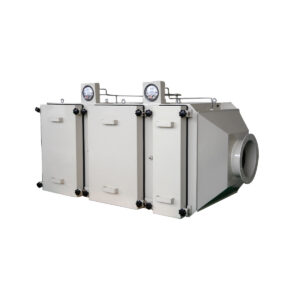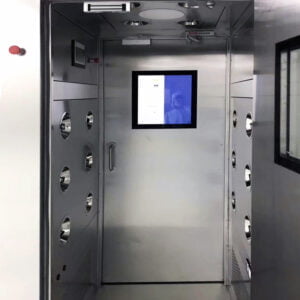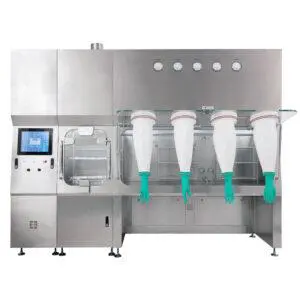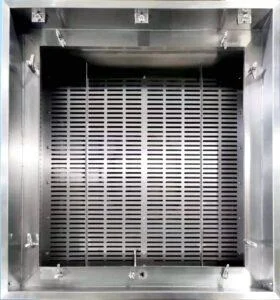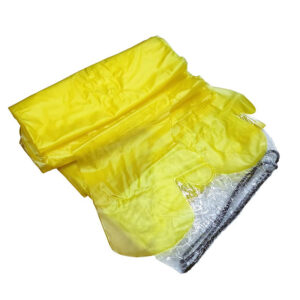Laminar flow hoods have become indispensable tools in various research and industrial settings, providing a controlled environment for critical processes that require protection from contamination. These specialized pieces of equipment utilize a unidirectional airflow to create a sterile workspace, making them essential in fields ranging from microbiology to electronics manufacturing.
The applications of laminar flow hoods are diverse and far-reaching, spanning across multiple scientific disciplines and industrial sectors. From microbiological testing and cell culture work to medical device production and semiconductor protocols, these hoods play a crucial role in maintaining the integrity of sensitive materials and processes. Their ability to provide a particle-free environment has made them invaluable in research laboratories, pharmaceutical companies, and high-tech manufacturing facilities alike.
As we delve deeper into the world of laminar flow hood applications, we'll explore the specific uses, benefits, and considerations for various industries. We'll examine how these hoods contribute to advancements in fields such as biotechnology, pharmaceuticals, and electronics, and discuss the key factors that influence their effectiveness in different settings.
Laminar flow hoods are essential for maintaining sterile conditions in research and industrial processes, providing a controlled environment that protects sensitive materials from contamination and ensures the integrity of critical procedures.
What are the primary applications of laminar flow hoods in microbiological research?
Microbiological research heavily relies on laminar flow hoods to maintain sterile conditions for various experimental procedures. These hoods create a particle-free environment that is crucial for working with microorganisms, cell cultures, and other sensitive biological materials.
In microbiology labs, laminar flow hoods are used for a wide range of applications, including the preparation of culture media, isolation of pure bacterial cultures, and handling of potentially infectious materials. They provide a controlled space where researchers can manipulate samples without the risk of external contamination.
One of the key advantages of using laminar flow hoods in microbiological research is the ability to prevent cross-contamination between different samples or experiments. The unidirectional airflow effectively sweeps away airborne particles and microorganisms, ensuring that the work area remains clean and sterile throughout the procedure.
Laminar flow hoods are critical in microbiological research for maintaining sterile conditions, preventing contamination, and ensuring the integrity of experimental results.
| Application | Benefit |
|---|---|
| Culture media preparation | Prevents contamination of growth media |
| Bacterial isolation | Ensures purity of isolated cultures |
| Handling infectious materials | Protects both sample and researcher |
The use of laminar flow hoods in microbiological research has revolutionized the field, allowing for more precise and reliable experiments. By providing a controlled environment, these hoods have enabled researchers to work with increasingly sensitive and complex biological systems, leading to significant advancements in our understanding of microbial life and its applications.
How do laminar flow hoods contribute to advancements in cell culture techniques?
Cell culture techniques have become increasingly sophisticated, and laminar flow hoods play a pivotal role in their success. These hoods provide the sterile environment necessary for the growth and manipulation of delicate cell lines, which are crucial for various fields of research, including cancer studies, stem cell research, and drug development.
In cell culture applications, laminar flow hoods offer a controlled space where researchers can perform tasks such as media changes, cell passaging, and the introduction of experimental treatments without risking contamination. The clean air environment is particularly important for long-term cell culture experiments, where even minor contamination can lead to the loss of valuable cell lines and months of work.
The use of YOUTH laminar flow hoods in cell culture has enabled researchers to work with increasingly sensitive cell types, including primary cells and stem cells, which require extremely clean conditions to maintain their viability and phenotype. This has opened up new avenues for research in regenerative medicine and personalized therapies.
Laminar flow hoods are essential for advancing cell culture techniques, providing the sterile conditions necessary for working with sensitive cell lines and enabling cutting-edge research in fields such as stem cell biology and cancer research.
| Cell Culture Application | Laminar Flow Hood Benefit |
|---|---|
| Stem cell research | Maintains pluripotency of sensitive stem cells |
| Cancer cell studies | Prevents cross-contamination between cell lines |
| Primary cell culture | Extends viability of hard-to-culture cells |
The impact of laminar flow hoods on cell culture techniques extends beyond just maintaining sterility. These hoods have also facilitated the development of more complex cell culture systems, such as 3D cultures and organoids, which require precise control over environmental conditions. As cell culture techniques continue to evolve, laminar flow hoods will undoubtedly remain a crucial tool in the researcher's arsenal.
What role do laminar flow hoods play in pharmaceutical and compounding industries?
In the pharmaceutical and compounding industries, laminar flow hoods are indispensable for ensuring the safety and efficacy of drug products. These hoods provide a controlled environment for the preparation of sterile medications, intravenous solutions, and other pharmaceutical compounds that require the highest levels of cleanliness.
Laminar flow hoods in pharmaceutical settings are used for a variety of applications, including the compounding of customized medications, the preparation of chemotherapy drugs, and the manufacturing of sterile injectables. The clean air environment provided by these hoods is crucial for preventing contamination that could compromise the quality and safety of the final product.
One of the key advantages of using laminar flow hoods in pharmaceutical compounding is the ability to protect both the product and the operator. The unidirectional airflow not only prevents contaminants from entering the work area but also helps to contain potentially hazardous substances, such as cytotoxic drugs used in cancer treatment.
Laminar flow hoods are critical in the pharmaceutical industry for maintaining the sterility of drug products, ensuring patient safety, and meeting stringent regulatory requirements for manufacturing and compounding processes.
| Pharmaceutical Application | Laminar Flow Hood Function |
|---|---|
| Sterile compounding | Prevents microbial contamination |
| Chemotherapy preparation | Contains hazardous substances |
| IV admixture | Ensures sterility of injectable solutions |
The use of laminar flow hoods in the pharmaceutical industry has enabled the development of more complex and sensitive drug formulations. As personalized medicine becomes more prevalent, these hoods will continue to play a crucial role in the preparation of customized treatments tailored to individual patients' needs.
How are laminar flow hoods utilized in the electronics and semiconductor industries?
The electronics and semiconductor industries rely heavily on laminar flow hoods to maintain the ultra-clean environments necessary for the production of sensitive components. These hoods play a crucial role in preventing particle contamination that could lead to defects in microchips, circuit boards, and other electronic devices.
In semiconductor manufacturing, laminar flow hoods are used for various processes, including wafer inspection, chip assembly, and quality control testing. The particle-free environment provided by these hoods is essential for maintaining the integrity of nanoscale components and ensuring the reliability of the final product.
The use of laminar flow hoods in electronics manufacturing has become increasingly important as device components have become smaller and more sensitive to contamination. Even microscopic particles can cause short circuits or other defects that render a device unusable, making the clean environment provided by laminar flow hoods critical to production yield and quality.
Laminar flow hoods are essential in the electronics and semiconductor industries for maintaining ultra-clean environments, preventing particle contamination, and ensuring the quality and reliability of advanced electronic components.
| Electronics Application | Laminar Flow Hood Benefit |
|---|---|
| Wafer inspection | Prevents particle deposition on surfaces |
| Chip assembly | Maintains cleanliness of sensitive components |
| Quality control testing | Ensures accurate results without contamination |
The adoption of laminar flow hoods in the electronics industry has enabled the production of increasingly sophisticated and miniaturized devices. As technology continues to advance, these hoods will remain crucial for pushing the boundaries of what's possible in electronics manufacturing and maintaining the high standards required for cutting-edge products.
What are the applications of laminar flow hoods in plant science and agricultural research?
Plant science and agricultural research have increasingly turned to laminar flow hoods to create controlled environments for studying and manipulating plant tissues. These hoods provide a sterile workspace that is crucial for various applications, including plant tissue culture, genetic modification experiments, and the study of plant-microbe interactions.
In plant tissue culture, laminar flow hoods are used to maintain aseptic conditions during the initiation, multiplication, and rooting stages of plant propagation. This sterile environment is essential for preventing contamination by fungi, bacteria, or other microorganisms that could overtake the slow-growing plant tissues.
Laminar flow hoods also play a significant role in genetic modification experiments, where maintaining a sterile environment is crucial for the success of delicate procedures such as Agrobacterium-mediated transformation or biolistic particle delivery. The clean air environment ensures that only the intended genetic material is introduced into the plant cells.
Laminar flow hoods are vital in plant science and agricultural research for maintaining sterile conditions in tissue culture, enabling genetic modification experiments, and facilitating the study of plant-microbe interactions without external contamination.
| Plant Science Application | Laminar Flow Hood Function |
|---|---|
| Tissue culture | Prevents microbial contamination of cultures |
| Genetic modification | Ensures sterility during transformation procedures |
| Microbe interaction studies | Isolates specific plant-microbe systems |
The use of laminar flow hoods in plant science has opened up new possibilities for crop improvement, conservation of rare species, and the study of plant biology at the cellular and molecular levels. As research in this field continues to advance, laminar flow hoods will remain an essential tool for scientists working to address global challenges in agriculture and plant conservation.
How do laminar flow hoods contribute to medical device manufacturing and testing?
Medical device manufacturing and testing require stringent cleanliness standards to ensure product safety and efficacy. Laminar flow hoods play a crucial role in this industry by providing a controlled environment for the assembly, packaging, and testing of medical devices ranging from simple syringes to complex implantable devices.
In the manufacturing process, laminar flow hoods are used to create clean workspaces for the assembly of components that must remain sterile. This is particularly important for devices that will come into direct contact with patients, such as catheters, implants, and surgical instruments. The particle-free environment prevents contamination that could lead to infections or device malfunctions.
For Laminar flow hood applications in medical device testing, these hoods provide a controlled space for quality control procedures and performance evaluations. The clean environment ensures that any test results are not influenced by external contaminants, leading to more accurate assessments of device functionality and safety.
Laminar flow hoods are essential in medical device manufacturing and testing for maintaining sterile conditions during assembly, preventing contamination in packaging processes, and ensuring accurate quality control testing.
| Medical Device Application | Laminar Flow Hood Benefit |
|---|---|
| Device assembly | Maintains sterility of components |
| Packaging | Prevents contamination before sterilization |
| Quality control testing | Ensures accurate and reliable test results |
The use of laminar flow hoods in medical device manufacturing has enabled the development of increasingly sophisticated and miniaturized devices. As medical technology continues to advance, these hoods will remain crucial for ensuring the safety and reliability of innovative products that improve patient care and outcomes.
What are the considerations for choosing between horizontal and vertical laminar flow hoods?
When selecting a laminar flow hood for a specific application, one of the key decisions is choosing between horizontal and vertical airflow designs. Each type has its own advantages and is better suited for certain tasks, making it important to understand the differences and considerations involved in the selection process.
Horizontal laminar flow hoods direct air parallel to the work surface, providing excellent protection for the product but less protection for the operator. These hoods are ideal for applications where product protection is the primary concern, such as in electronics manufacturing or certain pharmaceutical compounding tasks.
Vertical laminar flow hoods, on the other hand, direct air downward onto the work surface and then out through the front of the hood. This design offers better protection for both the product and the operator, making it suitable for applications involving hazardous materials or where operator safety is a significant concern.
The choice between horizontal and vertical laminar flow hoods depends on the specific application, with horizontal hoods prioritizing product protection and vertical hoods offering a balance of product and operator safety.
| Factor | Horizontal Flow | Vertical Flow |
|---|---|---|
| Product protection | Excellent | Good |
| Operator protection | Limited | Good |
| Space efficiency | Less efficient | More efficient |
| Ergonomics | May require reaching | More comfortable |
When choosing between horizontal and vertical laminar flow hoods, consider factors such as the nature of the materials being handled, the level of operator protection required, space constraints in the laboratory or facility, and ergonomic considerations for the users. By carefully evaluating these factors, you can select the most appropriate type of laminar flow hood for your specific needs and ensure optimal performance and safety in your applications.
Conclusion
Laminar flow hoods have proven to be indispensable tools across a wide range of scientific and industrial applications. From microbiological research and cell culture techniques to pharmaceutical compounding and electronics manufacturing, these specialized pieces of equipment provide the controlled, particle-free environments necessary for critical processes and procedures.
The versatility of laminar flow hoods is evident in their adoption across diverse fields such as plant science, medical device manufacturing, and semiconductor production. In each of these areas, the ability to maintain a sterile workspace has enabled significant advancements and innovations that would otherwise be impossible.
As we've explored the various applications of laminar flow hoods, it's clear that their impact extends far beyond simply providing clean air. These hoods have become integral to the development of new drugs, the production of cutting-edge electronic devices, and the advancement of our understanding of biological systems.
The choice between horizontal and vertical laminar flow hoods highlights the importance of selecting the right equipment for specific applications. By carefully considering factors such as product protection, operator safety, and ergonomics, researchers and manufacturers can optimize their processes and achieve the best possible results.
As technology continues to advance and new challenges emerge in fields such as biotechnology, nanotechnology, and personalized medicine, laminar flow hoods will undoubtedly continue to play a crucial role. Their ability to provide controlled, contamination-free environments will remain essential for pushing the boundaries of what's possible in research and industry.
In conclusion, the wide-ranging applications of laminar flow hoods underscore their importance as foundational tools in modern science and technology. As we look to the future, these versatile devices will continue to be at the forefront of innovation, enabling discoveries and advancements that have the potential to transform our world.
External Resources
Lab Planning Guide: BSCs, Fume Hood, Laminar Flow – Air Science – This guide provides detailed information on laminar flow hoods, including their applications in microbiological testing, cell cultures, clinical/medical testing, medical device production, and semiconductor protocols. It also discusses the differences between horizontal and vertical laminar flow hoods.
Laminar Flow Hoods – Plastic Design, Inc. – This resource outlines the various industries that use laminar flow hoods, such as plant science research, clinical applications, stem cell therapy, and semiconductor manufacturing. It also discusses the types of laminar flow hoods and their benefits.
How to Use Laminar Flow Hood in the Pharmaceutical and Compounding Industries | Germfree – This article focuses on the use of laminar flow hoods in the pharmaceutical and compounding industries, comparing and contrasting horizontal and vertical airflow hoods. It discusses their applications, benefits, and the factors to consider when choosing between them.
How To Use Laminar Flow Hoods In The Pharmaceutical And Compounding Industries | Cell & Gene – This resource provides a comprehensive comparison of horizontal and vertical laminar flow hoods in the pharmaceutical and compounding industries. It covers their applications, benefits, and the considerations for selecting the appropriate type based on specific requirements.
Laminar Flow Hood/Cabinet: Principle, Types, Parts, Uses | iGELs – This blog explains the working principles, components, and types of laminar flow hoods. It also discusses their uses in various fields such as microbiological research, pharmaceuticals, and electronics, along with necessary precautions for their use.
Laminar Flow Hoods: Applications and Uses – This page from Labconco details the applications of laminar flow hoods, including tissue culture, plant research, and the manufacture of medical devices and electronic components. It highlights the importance of these hoods in maintaining a sterile environment.
- Laminar Flow Cabinets: Uses and Applications – Thermofisher's resource explains the uses of laminar flow cabinets in various scientific and industrial applications, such as cell culture, microbiology, and pharmaceutical preparation. It also discusses the different types of laminar flow cabinets available.
Related Contents:
- Laminar Flow Hood Airflow: Understanding Dynamics
- Vertical Laminar Flow Hoods: Optimal Protection
- Horizontal Laminar Flow Hoods: Uses and Benefits
- Laminar Flow Hood Certification: Ensuring Quality
- Laminar Flow Hood vs BSC: Choosing Wisely
- Laminar Flow Hood Cleaning: Step-by-Step Guide
- Medical Device Testing with Sterility Test Isolators
- Biotech Research: Mobile LAF Cart Applications
- Laminar Flow Passboxes: Ensuring Continuous Air Purification


